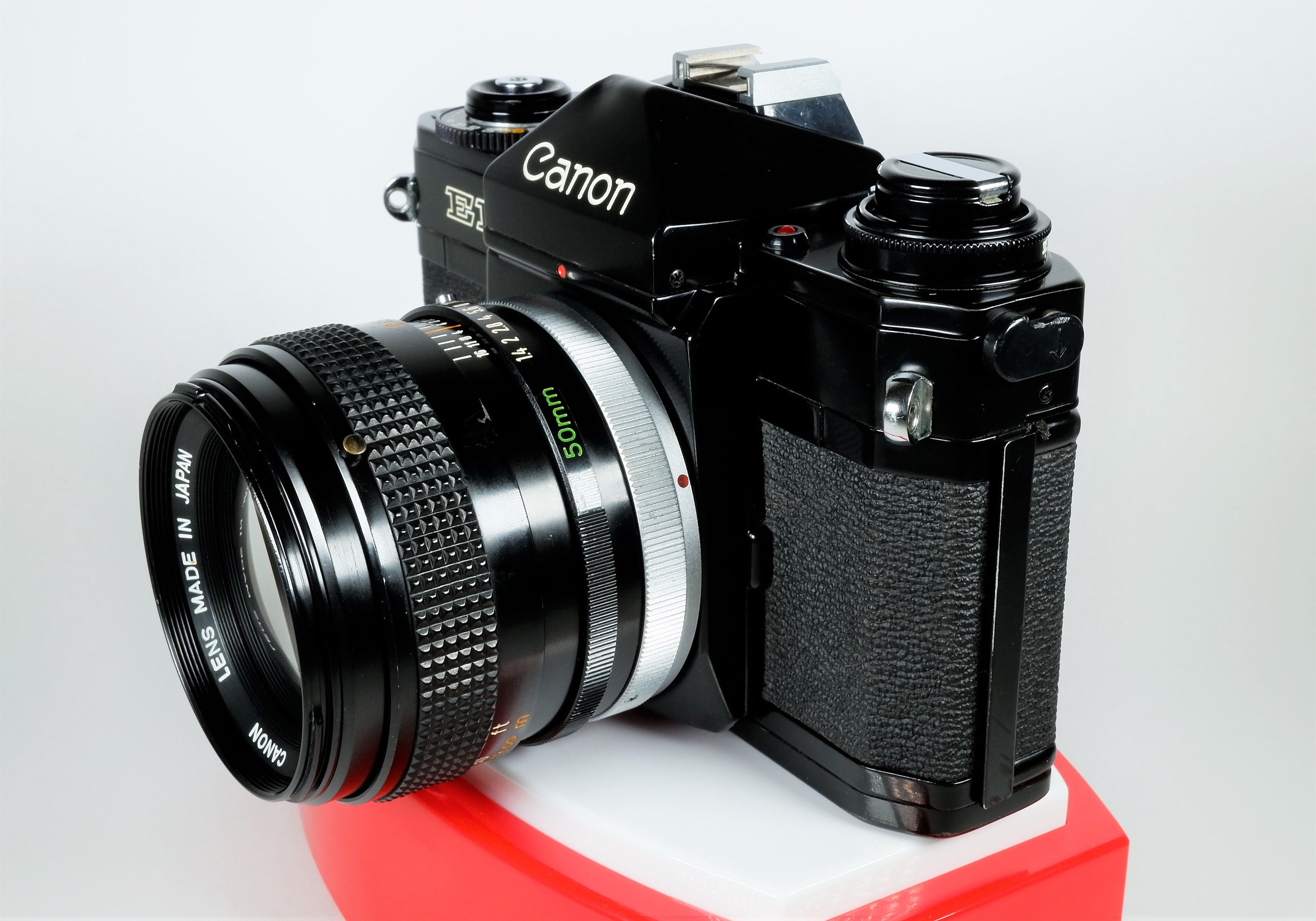
It can use any Canon EF lens made since the introduction of the mount in 1987, though you may encounter issues with various third-party lenses. With five metering modes - evaluative, spot, center spot, partial, multi-spot, and focusing point-linked spot - and 45 zone TTL (through the lens) phase detection autofocus, the EOS-1V was a powerhouse piece of technology.

Capable of an astonishing 10 frames per second, it was the fastest moving-mirror film camera ever made at the time - only fixed pellicle mirror cameras like the Nikon F3H, capable of 13 frames per second when used with the MN-2 battery, were faster.

#FILM CAMERA 35MM PROFESSIONAL#
The Canon EOS-1V, released in 2000, was the fifth generation of Canon’s top-of-the-line professional series which started with the F-1. Why two? Because they are both excellent, “can’t-go-wrong” options and the only thing that separates them is the lenses - if you already have EF mount lenses, you should go with the Canon and if you have F-mount glass, you should choose the Nikon. I was tempted to put the Nikon F2 Titan here, but I set aside my personal bias that sees the Titan as my “white whale” of cameras to instead choose not one, but two of the best (and last) 35mm cameras ever made. The Best Premium SLR: Canon EOS-1V or Nikon F6 Image by Christopher Kesting | Creative Commons Focusing screens are also easily interchangeable. There’s even a (very cool) waist level finder available (DW-3). Since the finders are interchangeable, a regular F3 can become an F3HP by swapping in the DE-3 finder, and an F3HP can use one of the many other finders available – including the basic DE-2 finder. The F3HP is simply the F3 with a high-eyepoint finder (very nice for those of us who wear glasses). On a personal note, in my experience with thousands of cameras, there is no correlation regarding longevity or reliability and whether the camera is mechanical or electronic. Like Nikon’s FE/FE2/FA models, the F3 has an electronically controlled shutter, so it will not function without batteries. The F3 is, unsurprisingly, the successor to the legendary Nikon F2, but now with a built-in light meter (no clunky finder necessary) and aperture-priority automation. It is nothing short of perfect it has a rock-solid build, amazing ergonomics, and is one of the most dependable cameras I’ve ever come across. The Nikon F3 is one of the finest cameras ever made. The Best Mid-Range SLR: Nikon F3 / F3HP Image by James P. Robert’s Camera is rarely without several X-700 bodies in stock.
#FILM CAMERA 35MM MANUAL#
Make sure to check compatibility between lens types (MD versus MC) if you intend to use the X-700’s program auto mode (MC lenses are aperture priority or manual only). Your regular 50mm f/1.8 or 50mm f/1.7 Minolta lenses are dirt cheap, and 50mm f/1.4 or 55mm f/1.4 lenses are incredibly affordable as well. Even that lens can be found at a modest cost. There are a plethora of great Minolta lenses available at very reasonable prices there is also the renowned 58mm f/1.2 Rokkor which is a nice chunk of glass that produces nice, dreamy images wide-open. Otherwise, the bodies and features are nearly identical. The X-700 has Program, Aperture Priority, and Manual modes the X-570 lacks Program, which is honestly not a mode I ever use with 35mm cameras anyway. There are a number of great options I considered here: Nikon FE, Nikon FM, Pentax K2, or MX, but ultimately settled on Minolta because the X-570 was one of my first cameras and they’re powerhouses - loaded with features, and compared to the Nikons or Pentaxes, the glass is a great deal more affordable. The Best Bargain SLR: Minolta X-570 or X-700 Image from Robert’s Camera Similar alternatives include the Yashica FX-3 and Yashica FX-3 Super 2000. There really isn’t anything to complain about here.
#FILM CAMERA 35MM PLUS#
That’s far more than most cameras in this price range, plus it has an unusually extensive ASA range from 12 to 3200. The FX-103 Program has four modes: P (Program), HP (High-Speed Program), A (Aperture Priority), and M (Manual).

In fact, some of the lenses were so good that their designs exist to this day in the Zeiss Classic and subsequently the Zeiss Milvus series. It uses the Contax Yashica (C/Y) bayonet mount, which means it can utilize all of the extremely excellent Contax Zeiss lenses, many of which still hold their own even on high-resolution digital cameras. This is one of my favorite hidden gems of the film world and can routinely be found with a Yashica 50mm lens for $100 or less. The Best 35mm Film SLRs Ultra-Bargain SLR: Yashica FX-103 Program Image by KEH Camera


 0 kommentar(er)
0 kommentar(er)
